Aaron Cowan: Blind Love [Interview]
Chattanooga, TN
Aaron Cowan's 2017 exhibition, "Blind Love" at Frequency Arts in Chattanooga explores the dynamic created between the hunter and the hunted. Through this lens he investigates relationships, hierarchy, vulnerability, ownership and tenderness. His camouflage patterns reflect the softness and warmth of relationships, while masking voyeuristic power trips and obscuring possible dangers.
"I love being in love, falling, tumbling through it like warm fuzz, slowly, peacefully, you can close your eyes comfortably and just soak it up. This comes from friends, family, lovers—who seem to be too far and few between these days. Our political landscape has caused tumultuous rifts, given confidence to the toxicity, and burdened us with fear, paranoia, disbelief. There is a social madness, and therefore caution must be exercised: be careful to whom you disclose yourself. There it is: I can see you, and control whether you see me or not. The trouble is, weʼre all hiding. Weʼre all wearing camouflage, and it makes that pursuit and love of each other that much more difficult." -Aaron Cowan
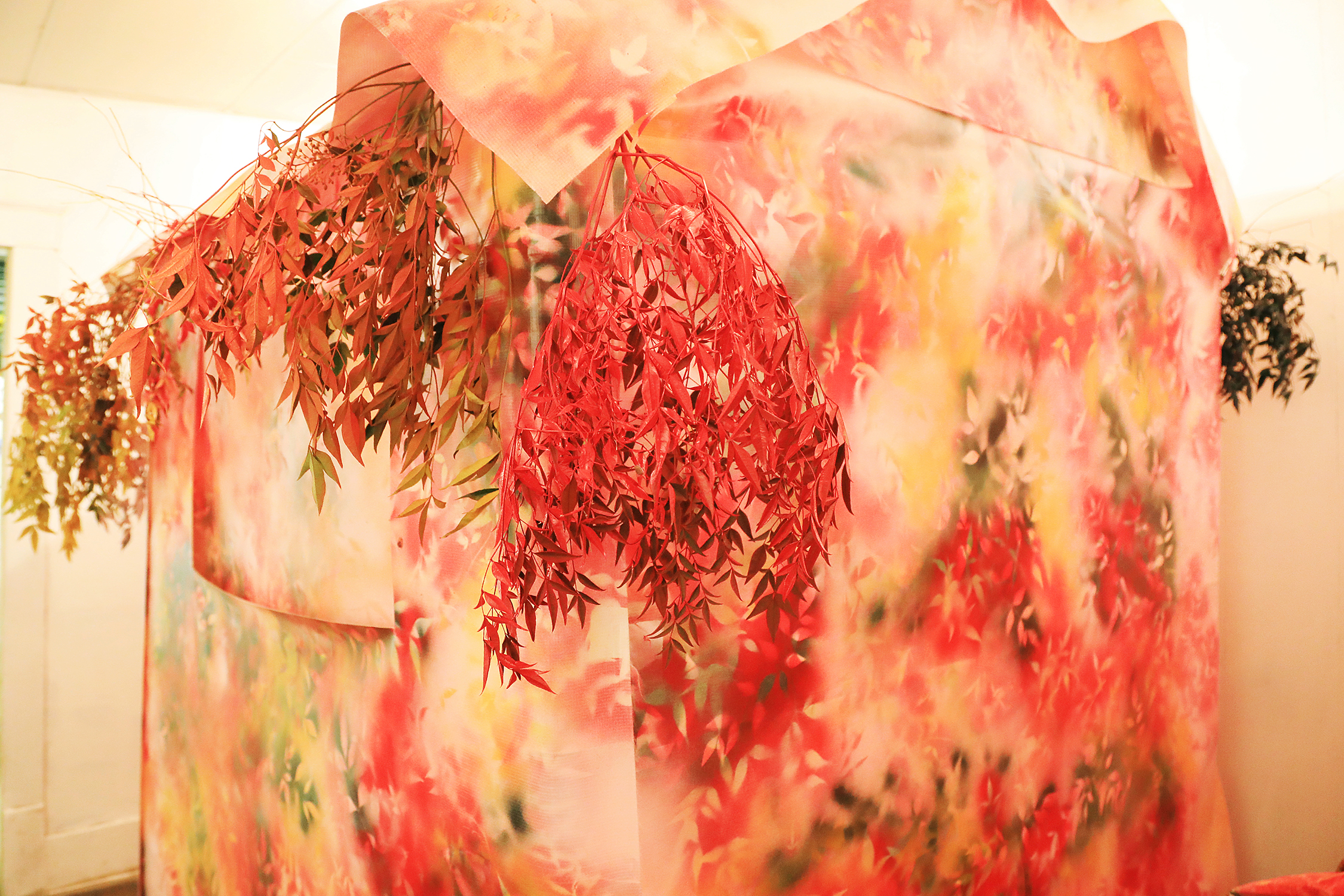
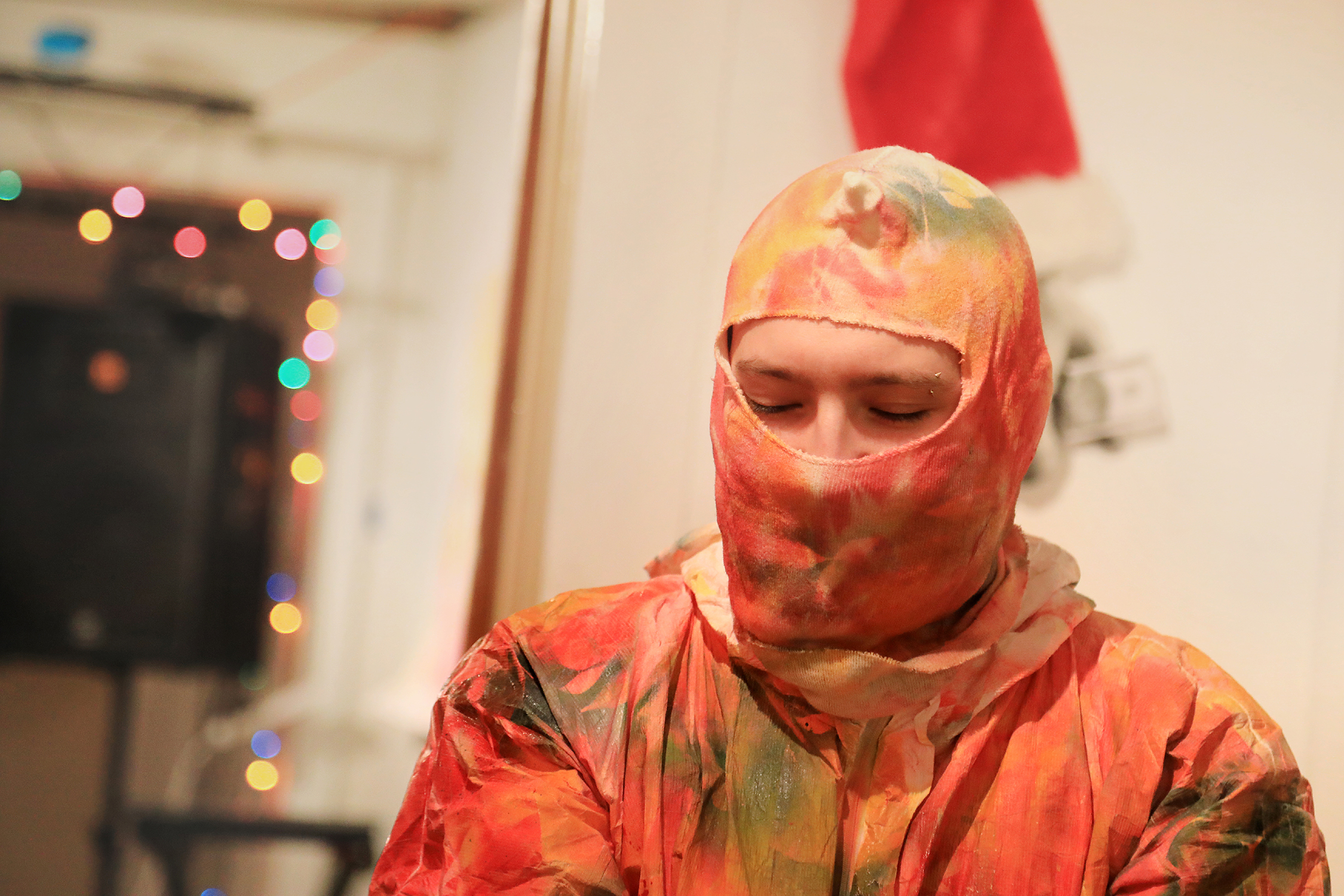
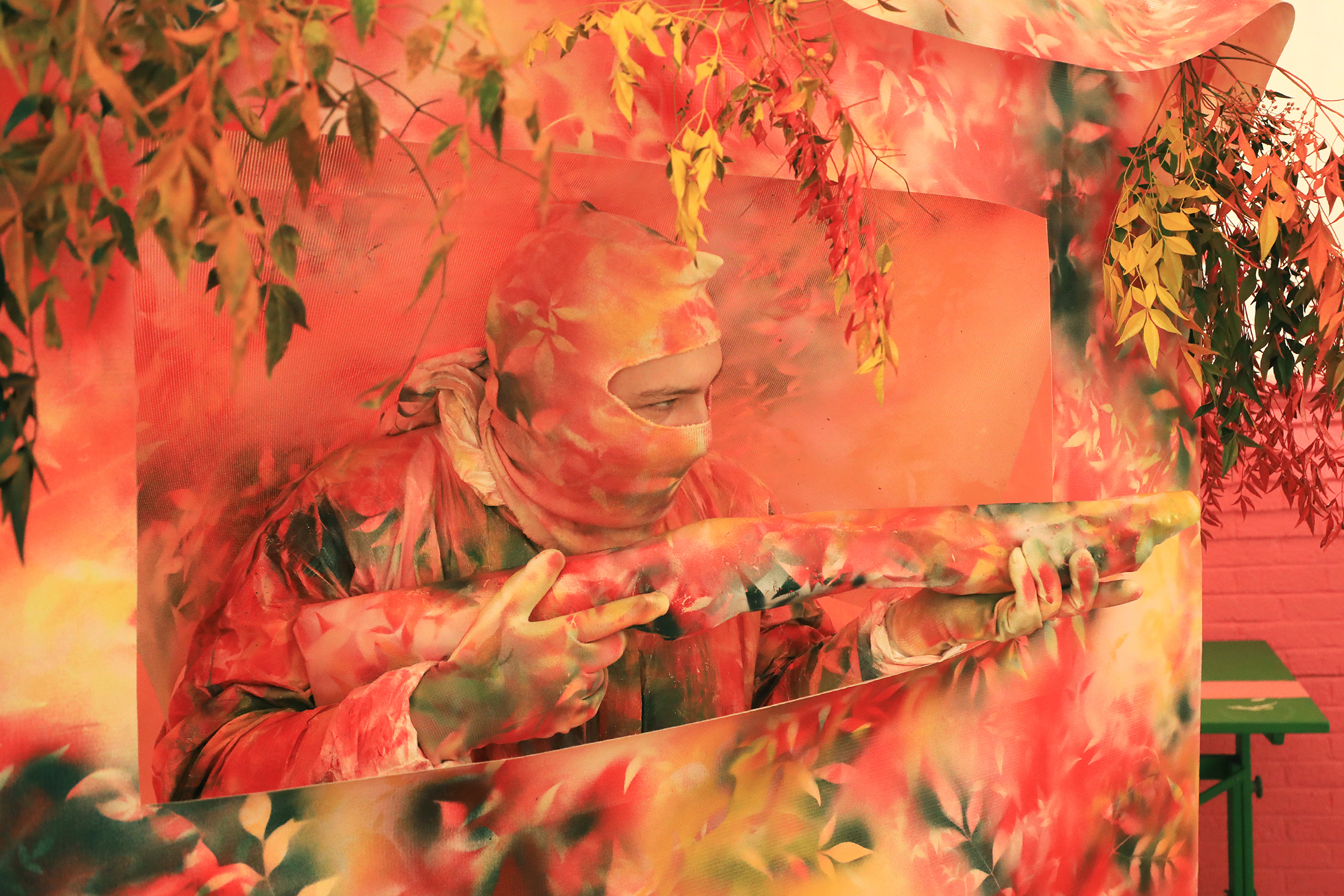

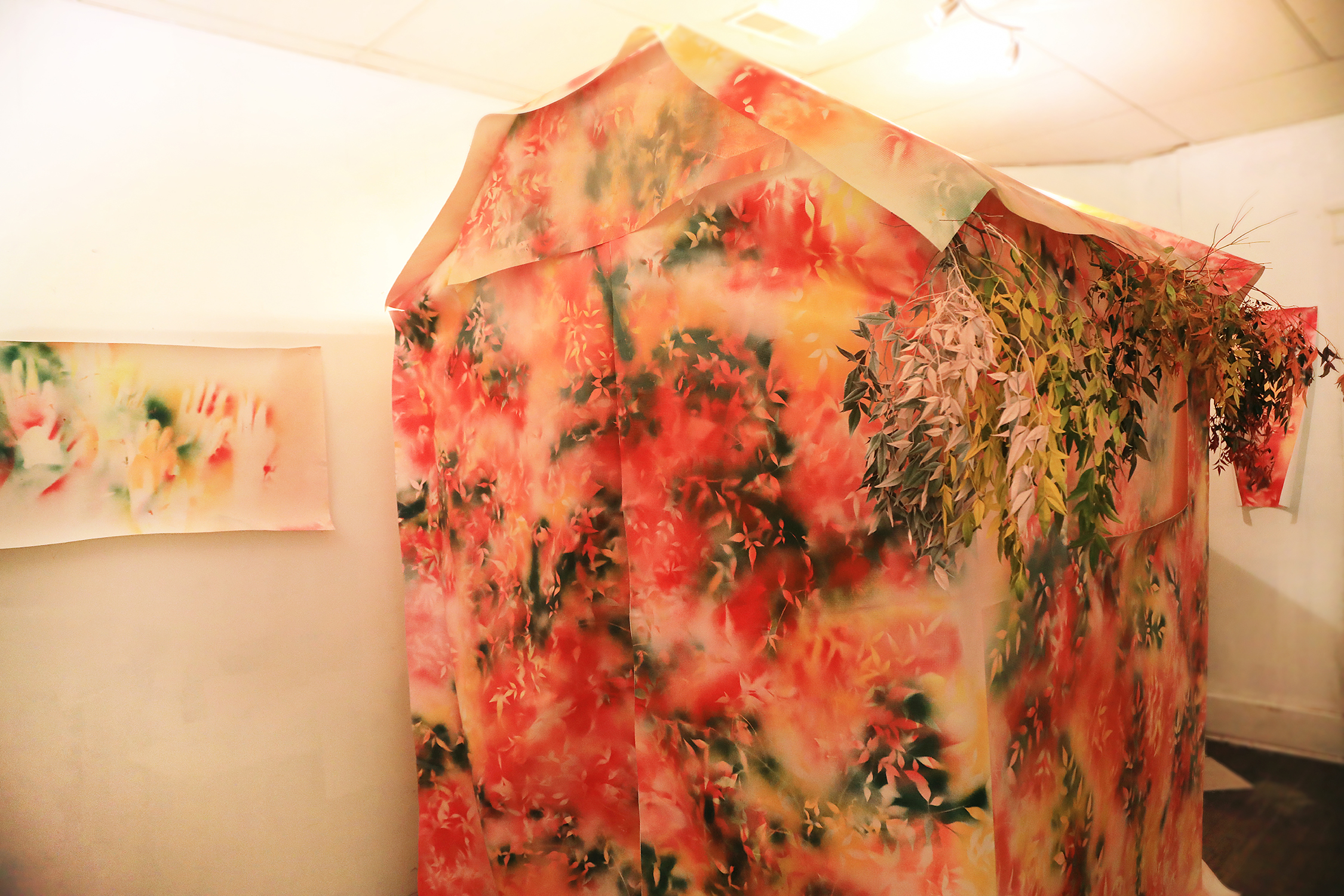
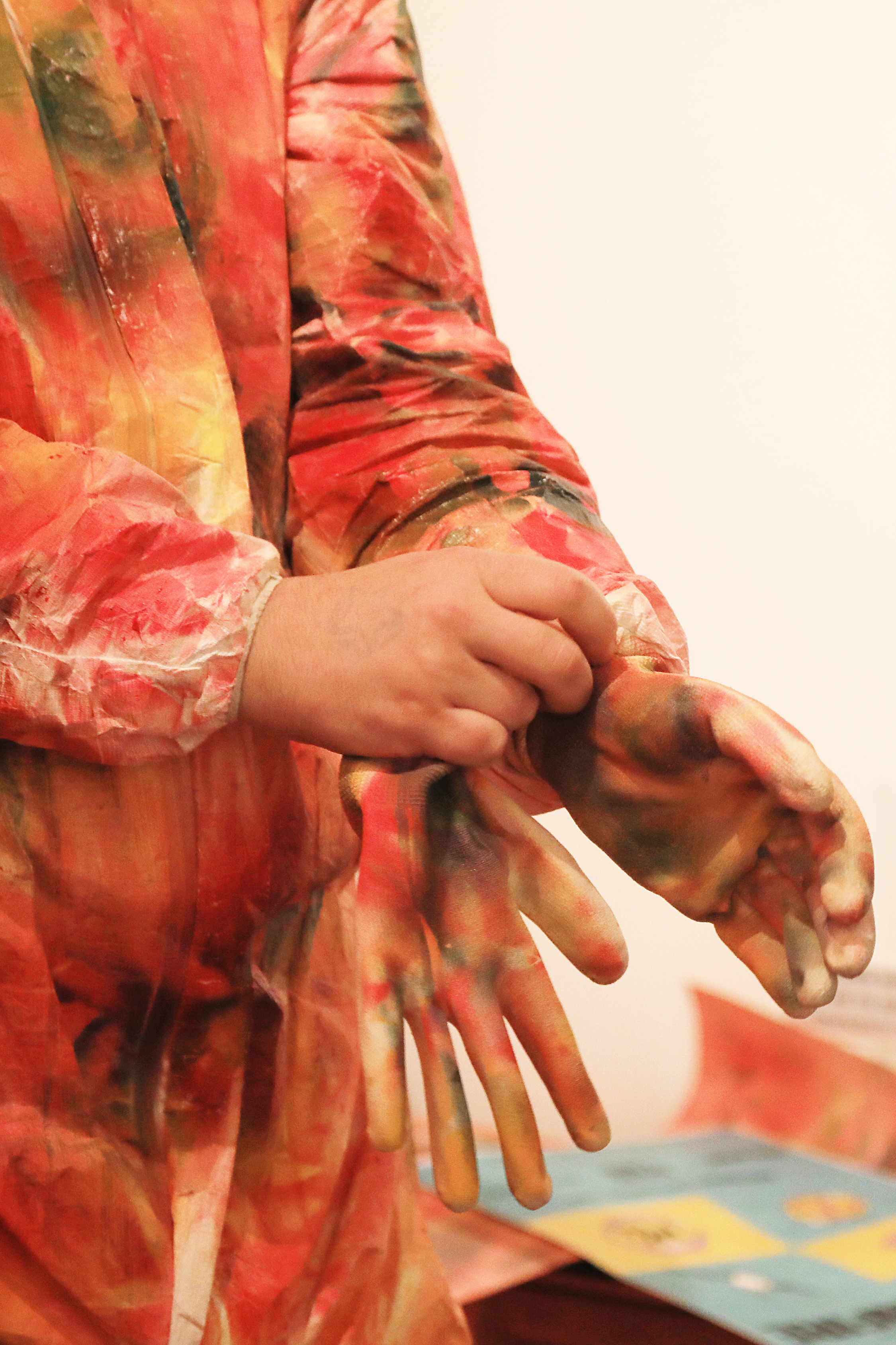
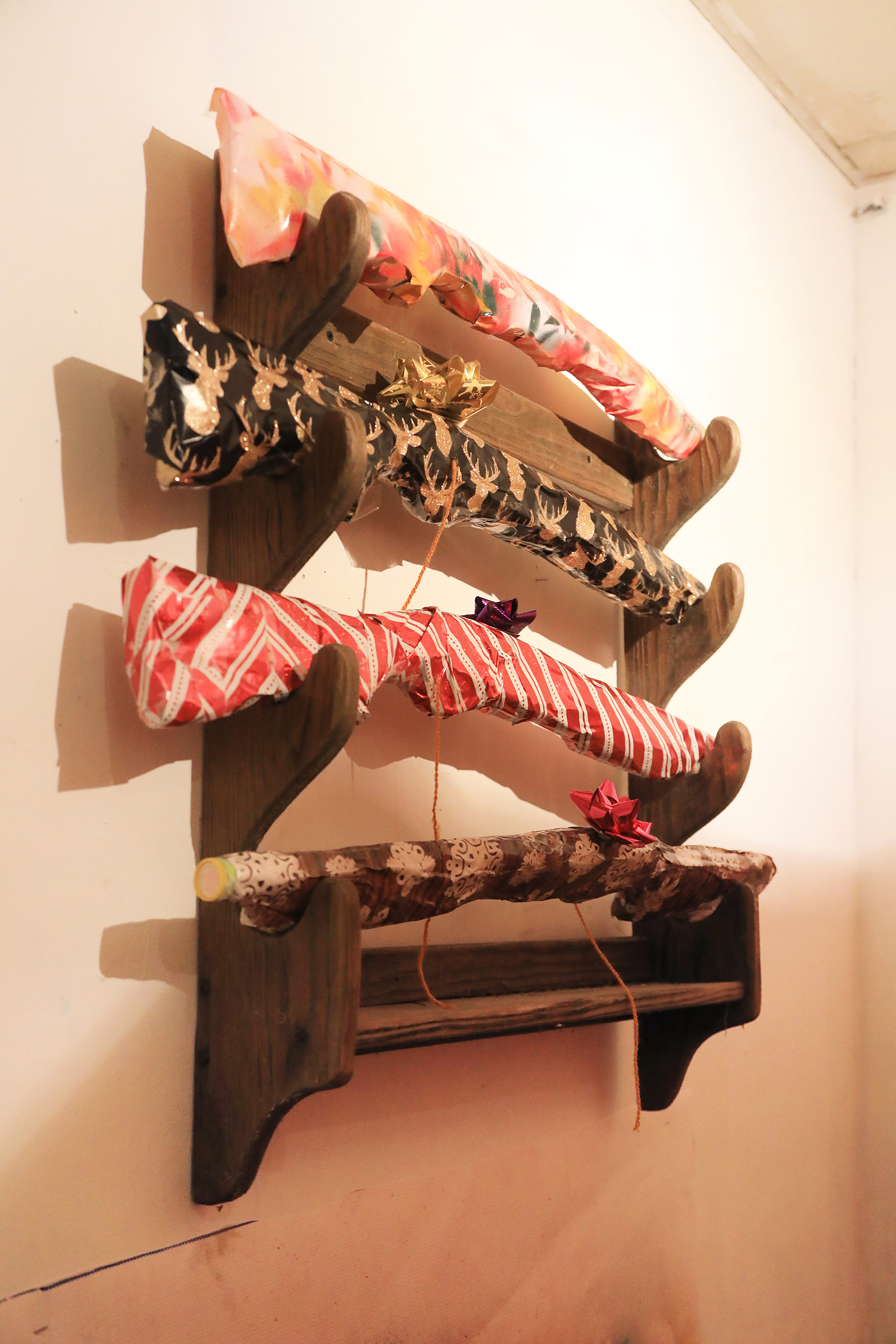
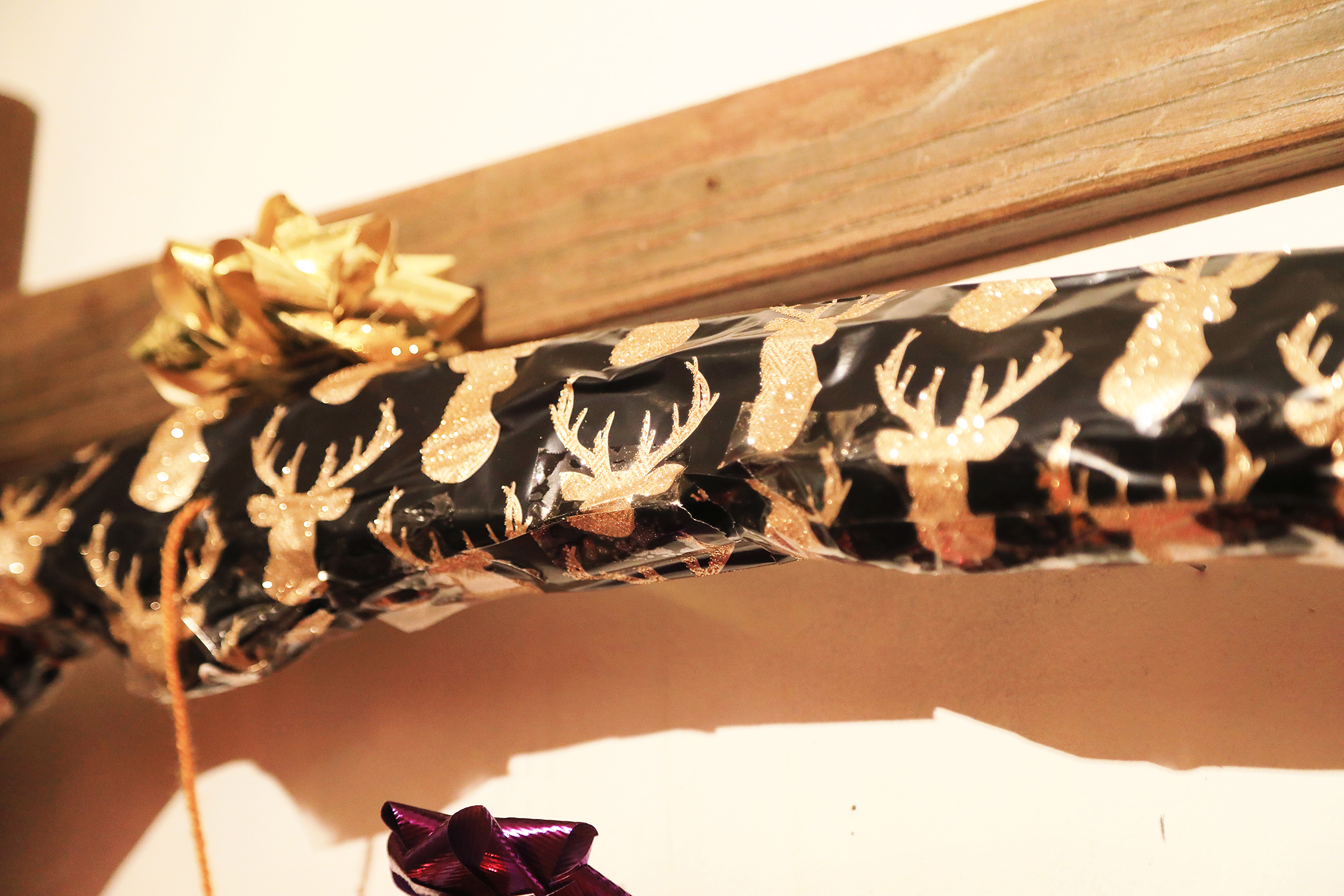
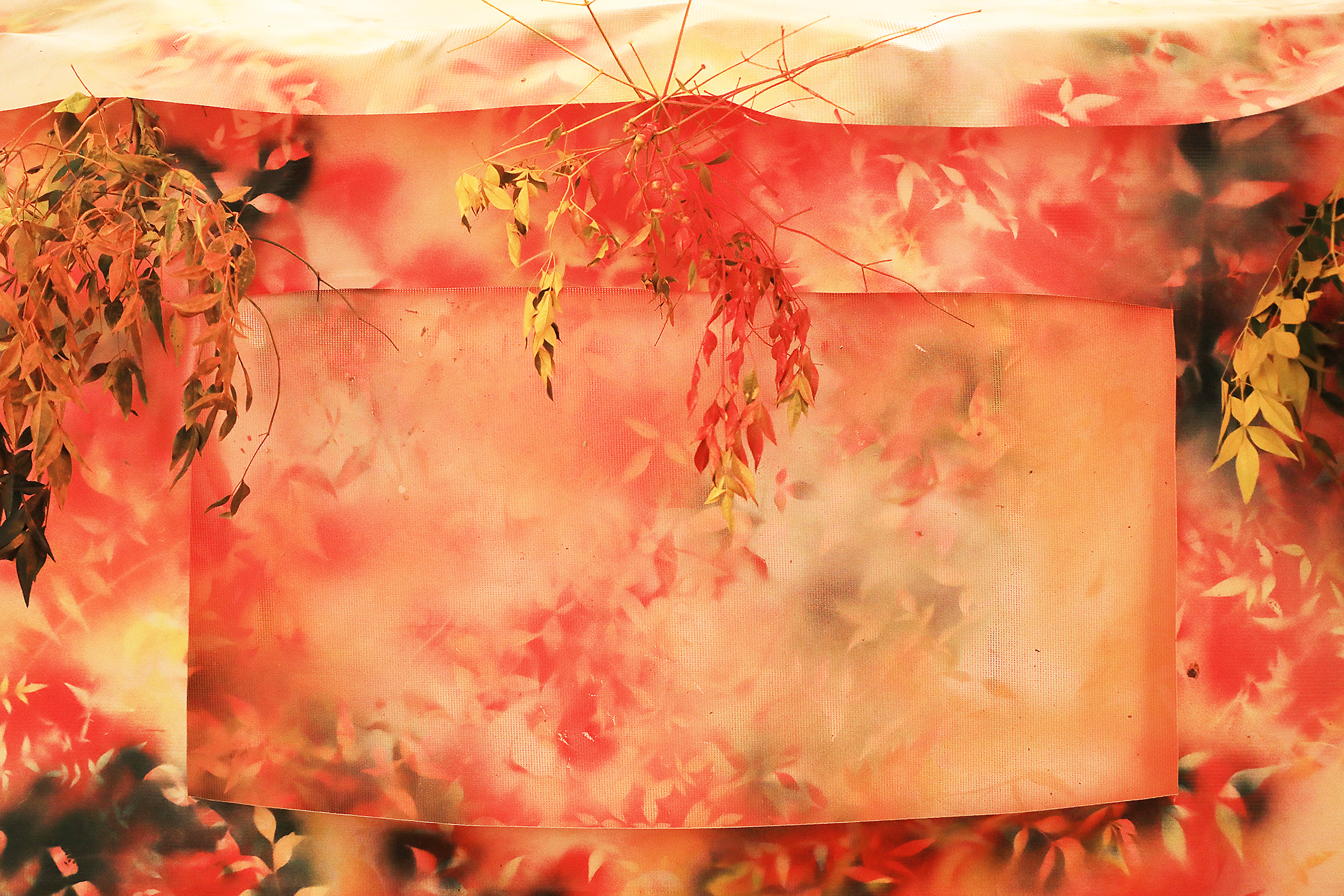
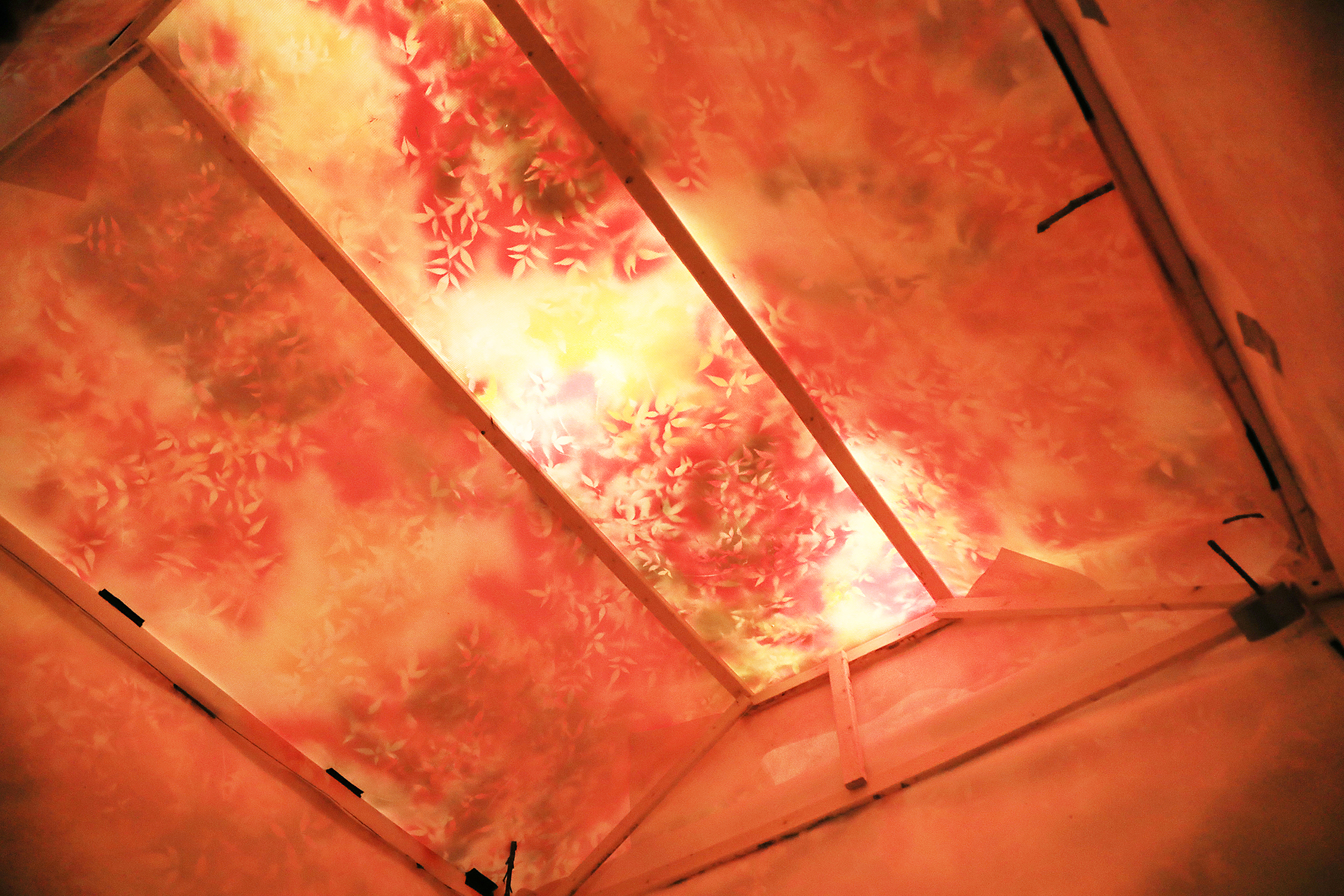
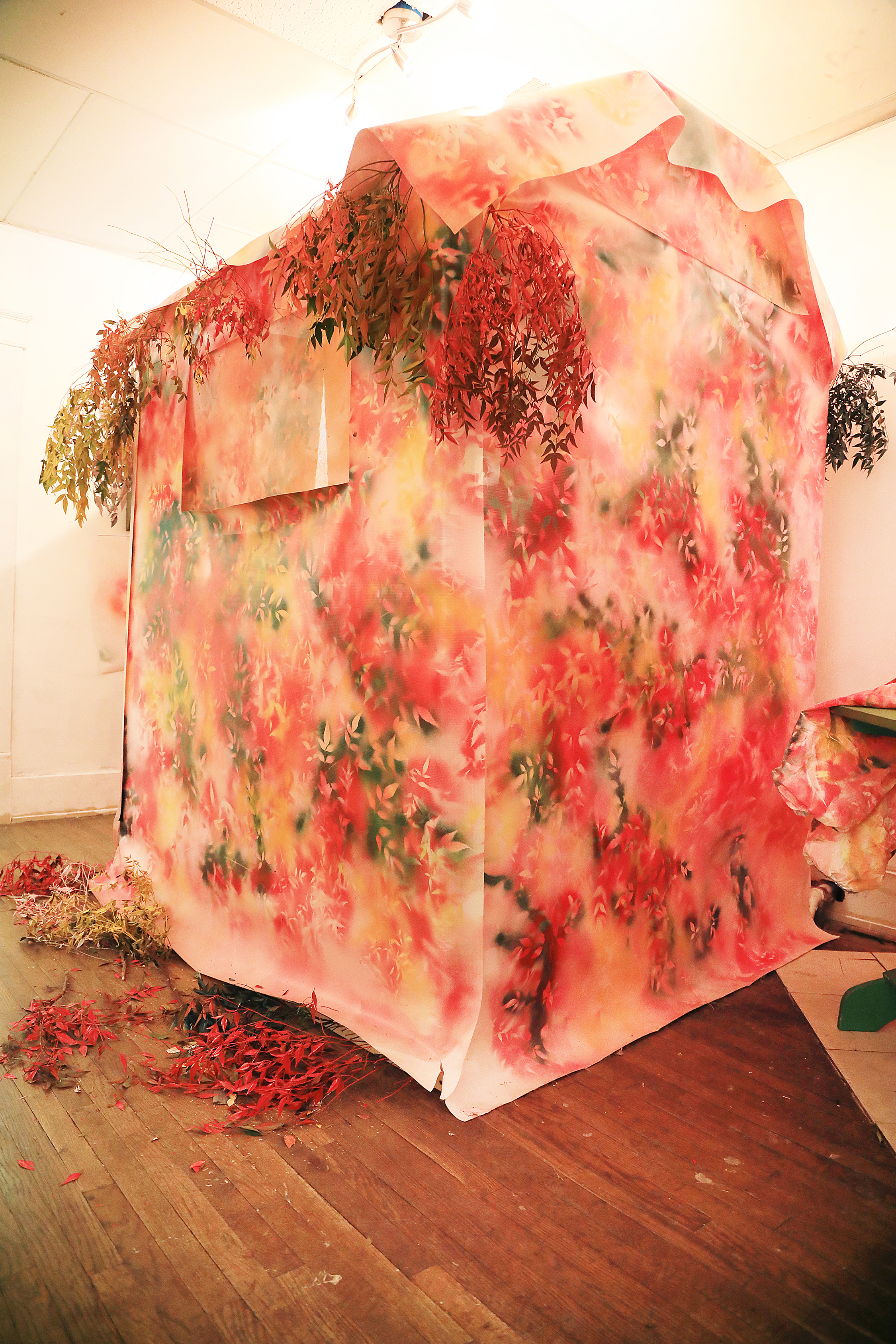
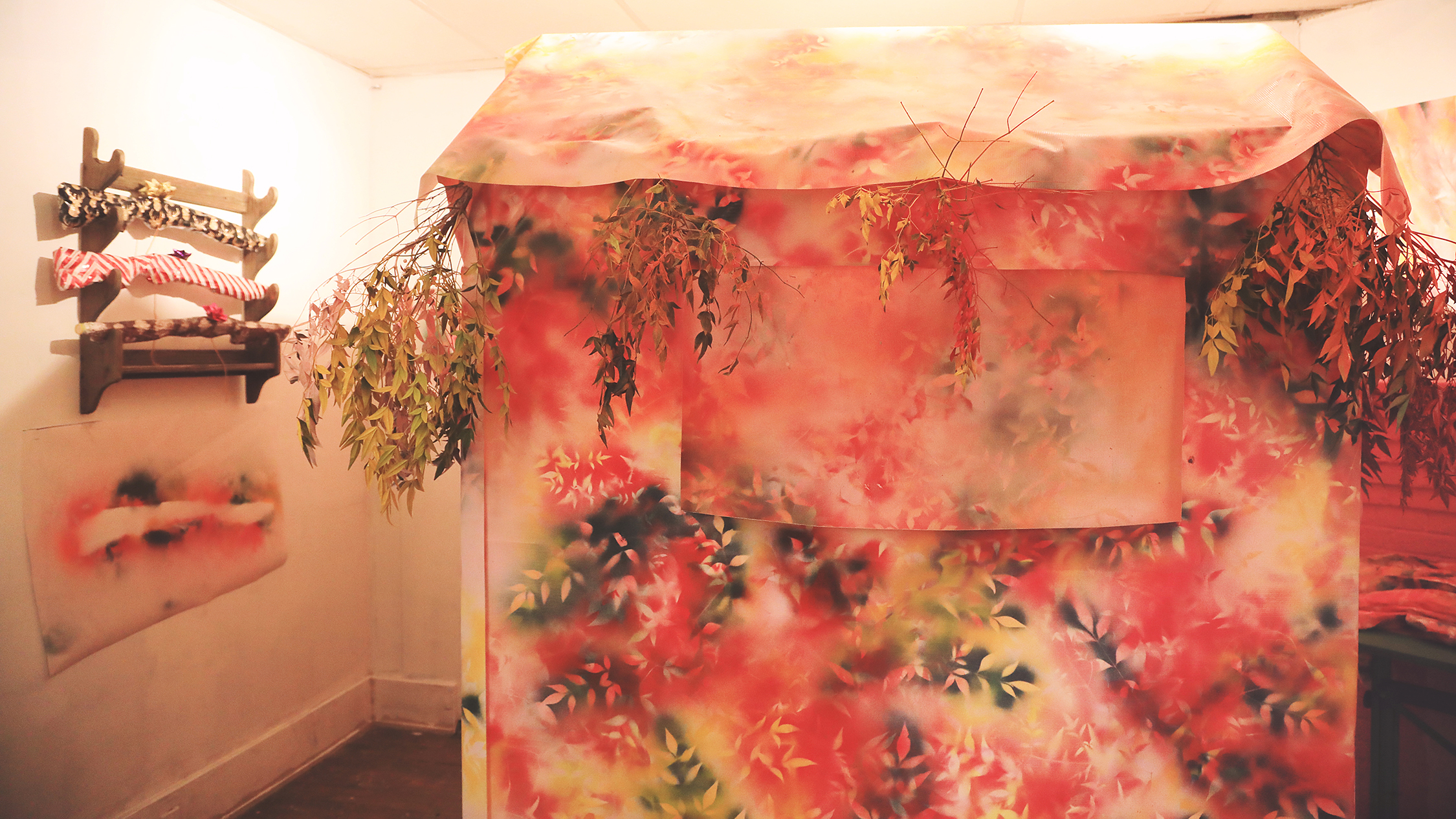
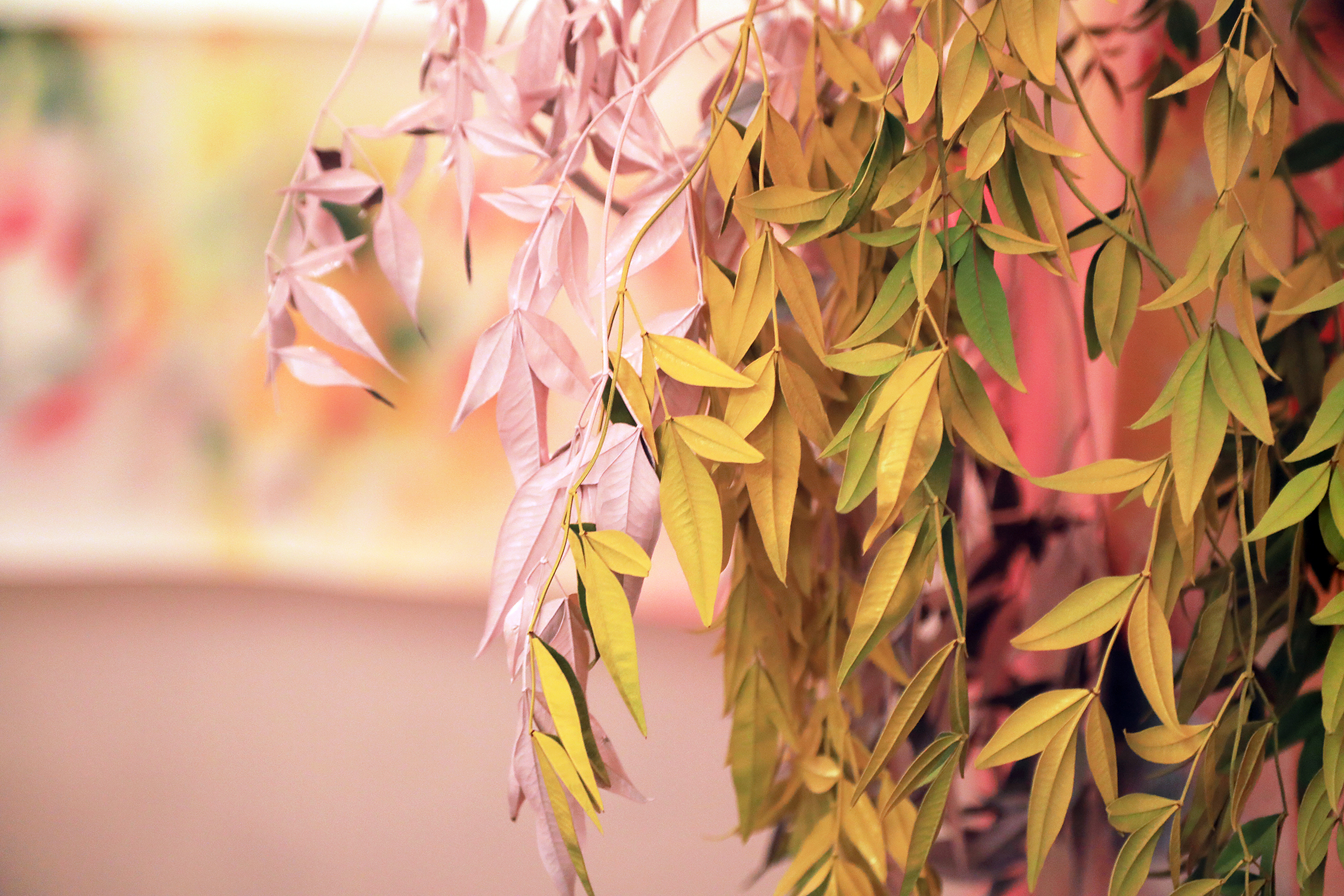
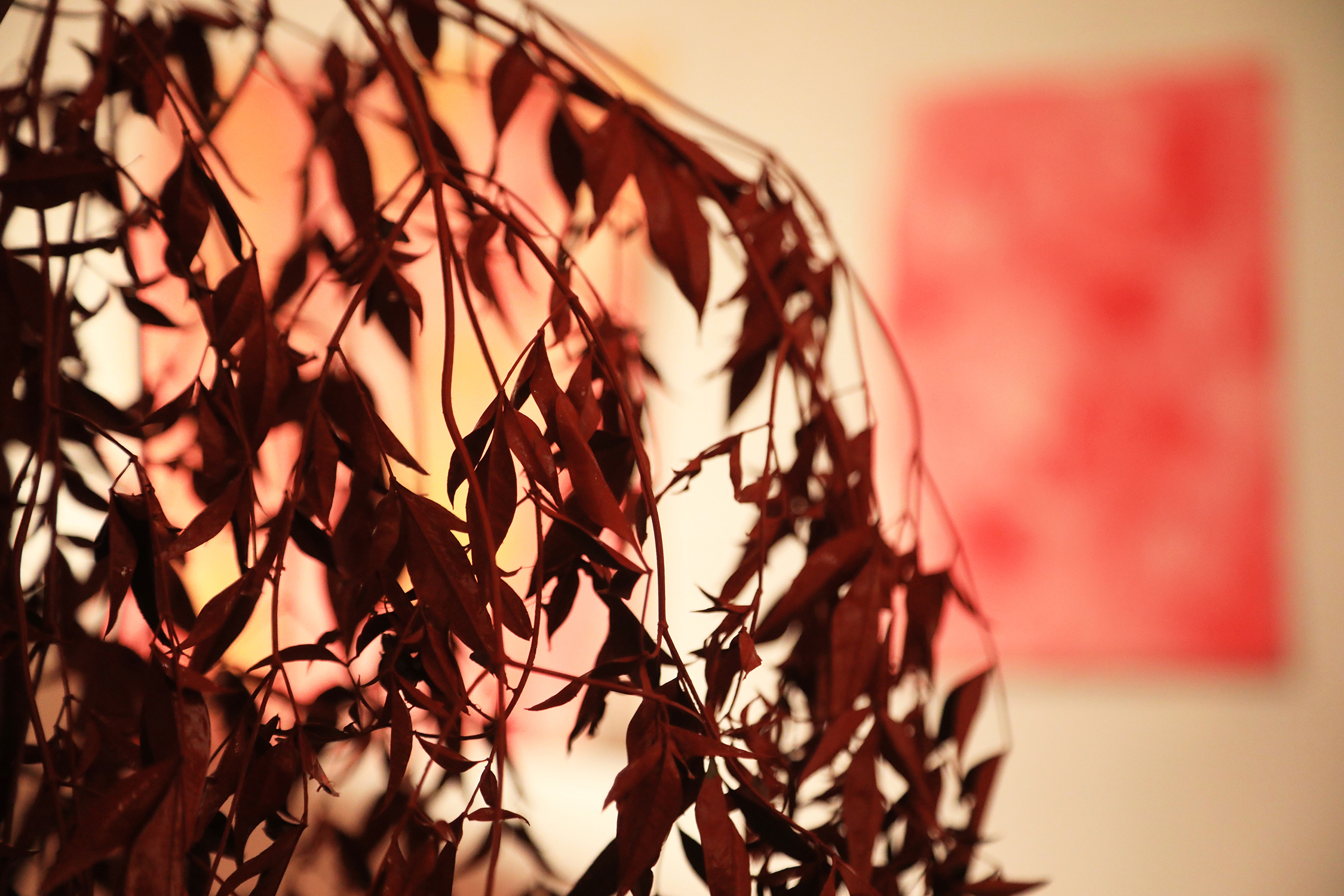
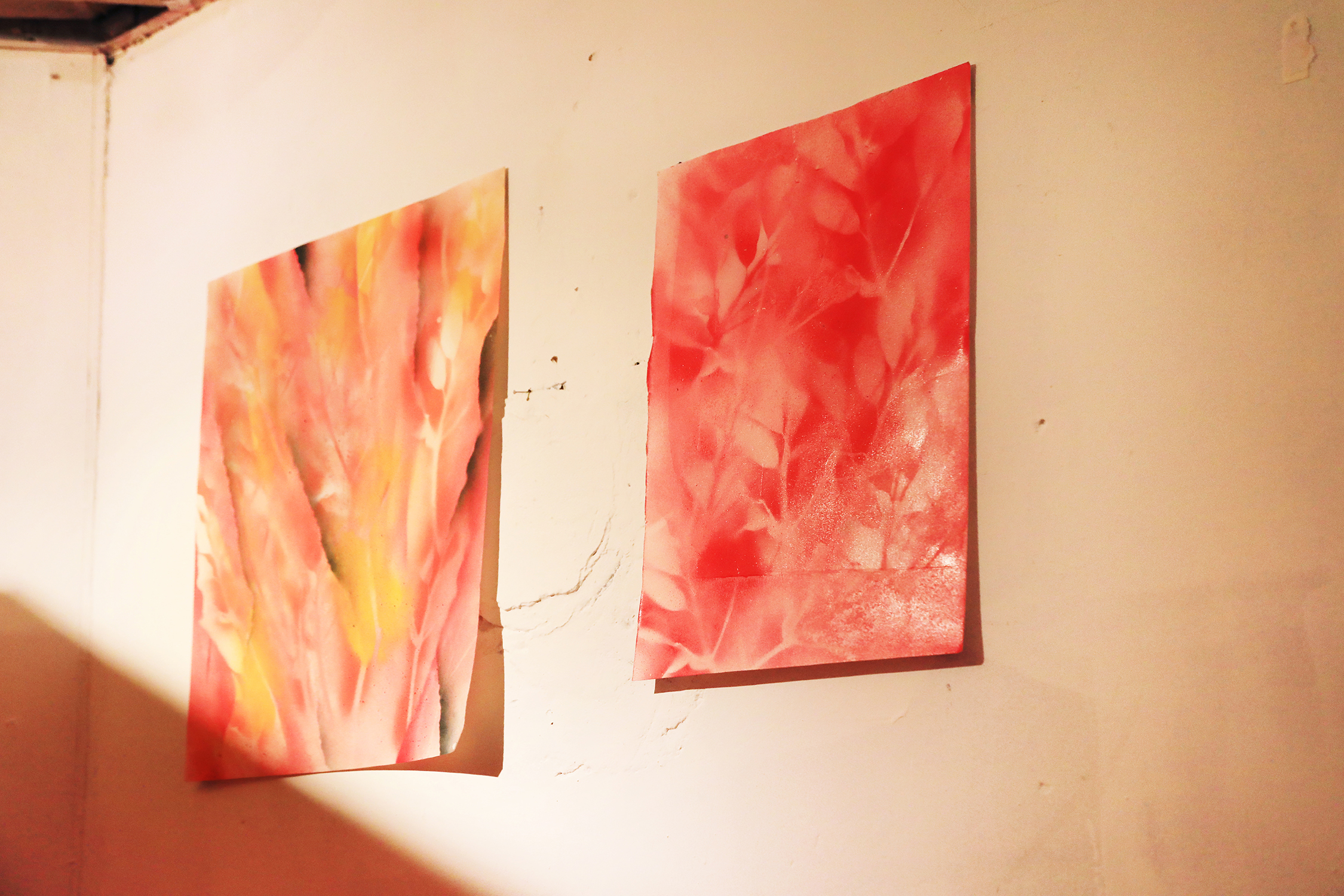
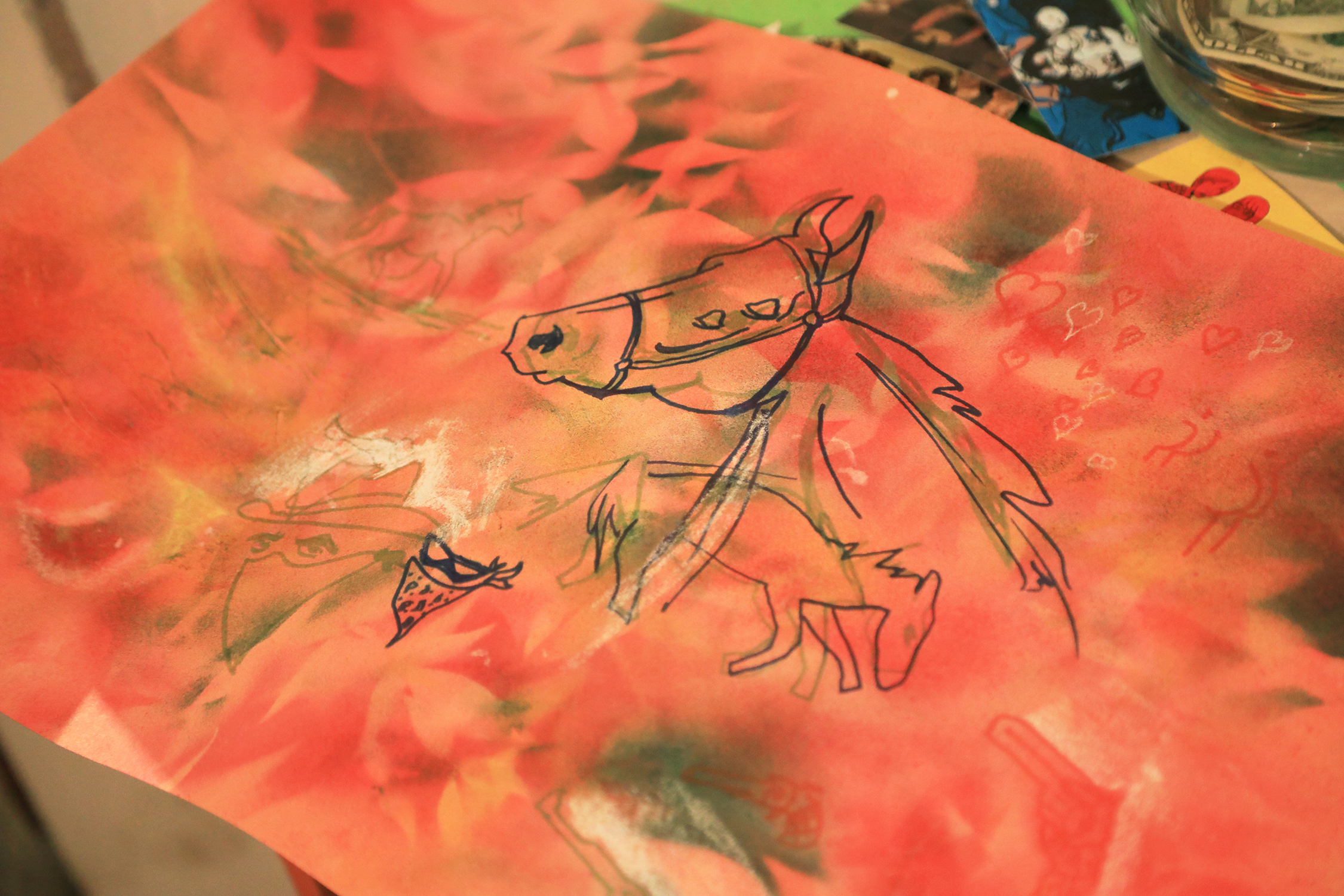
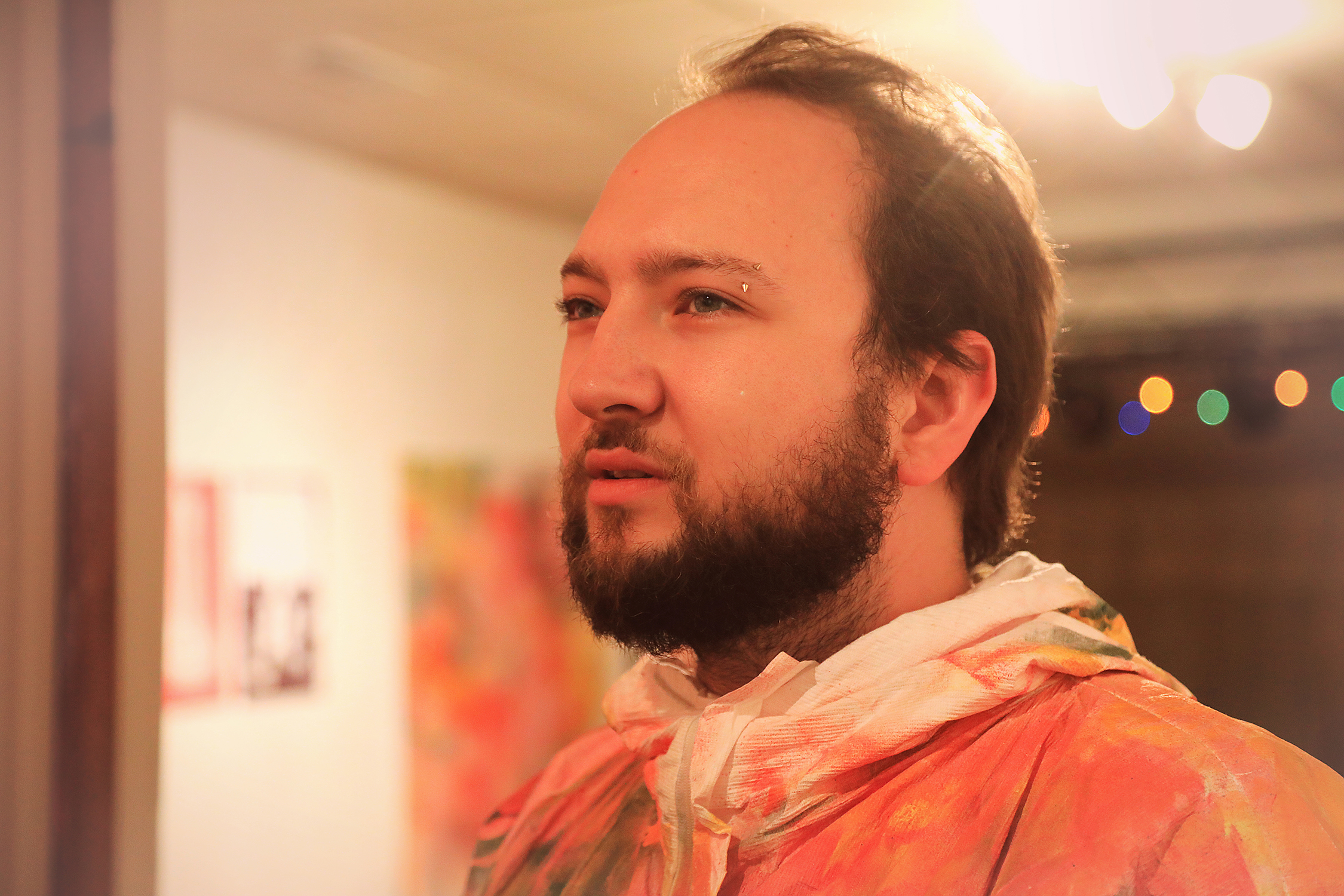
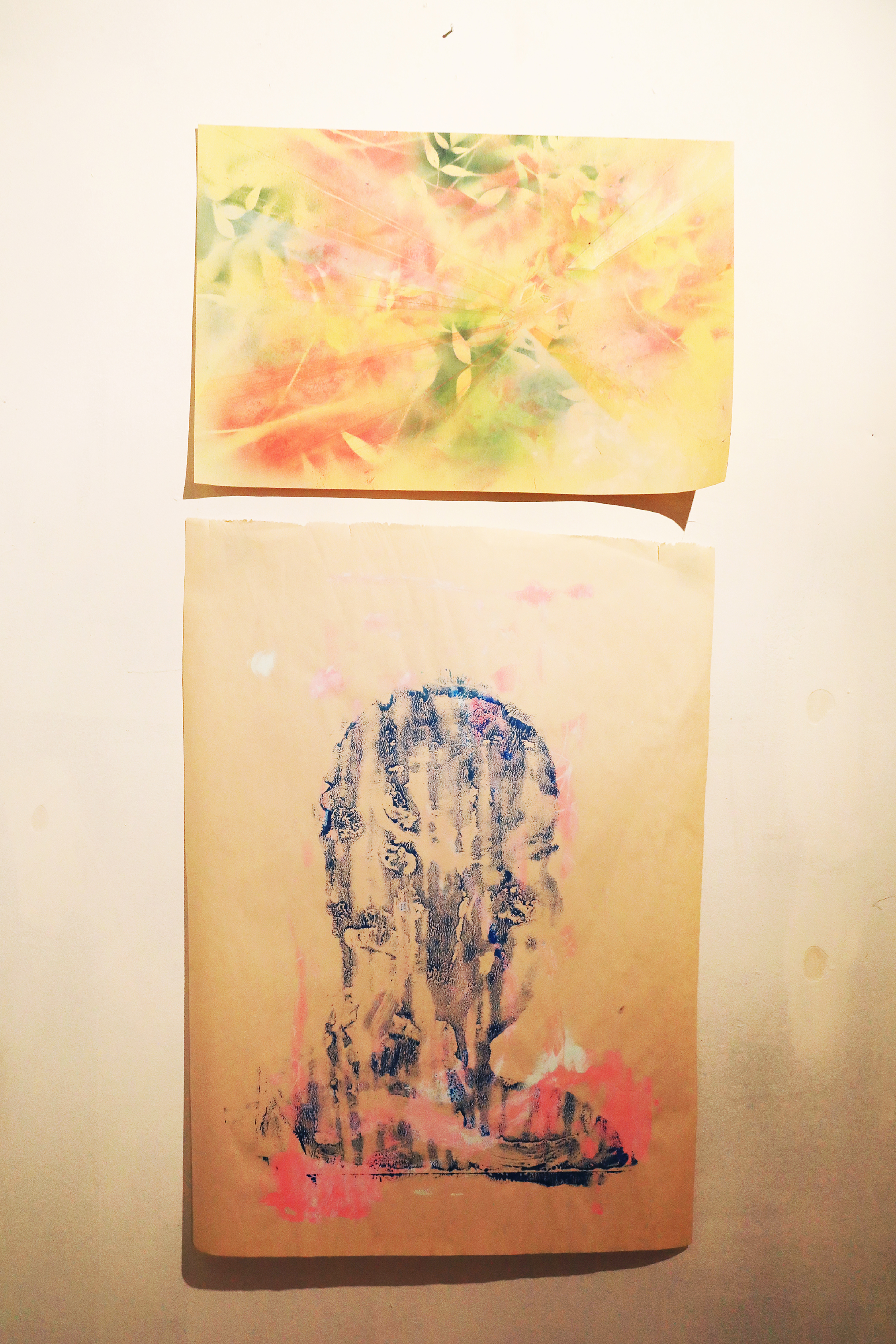
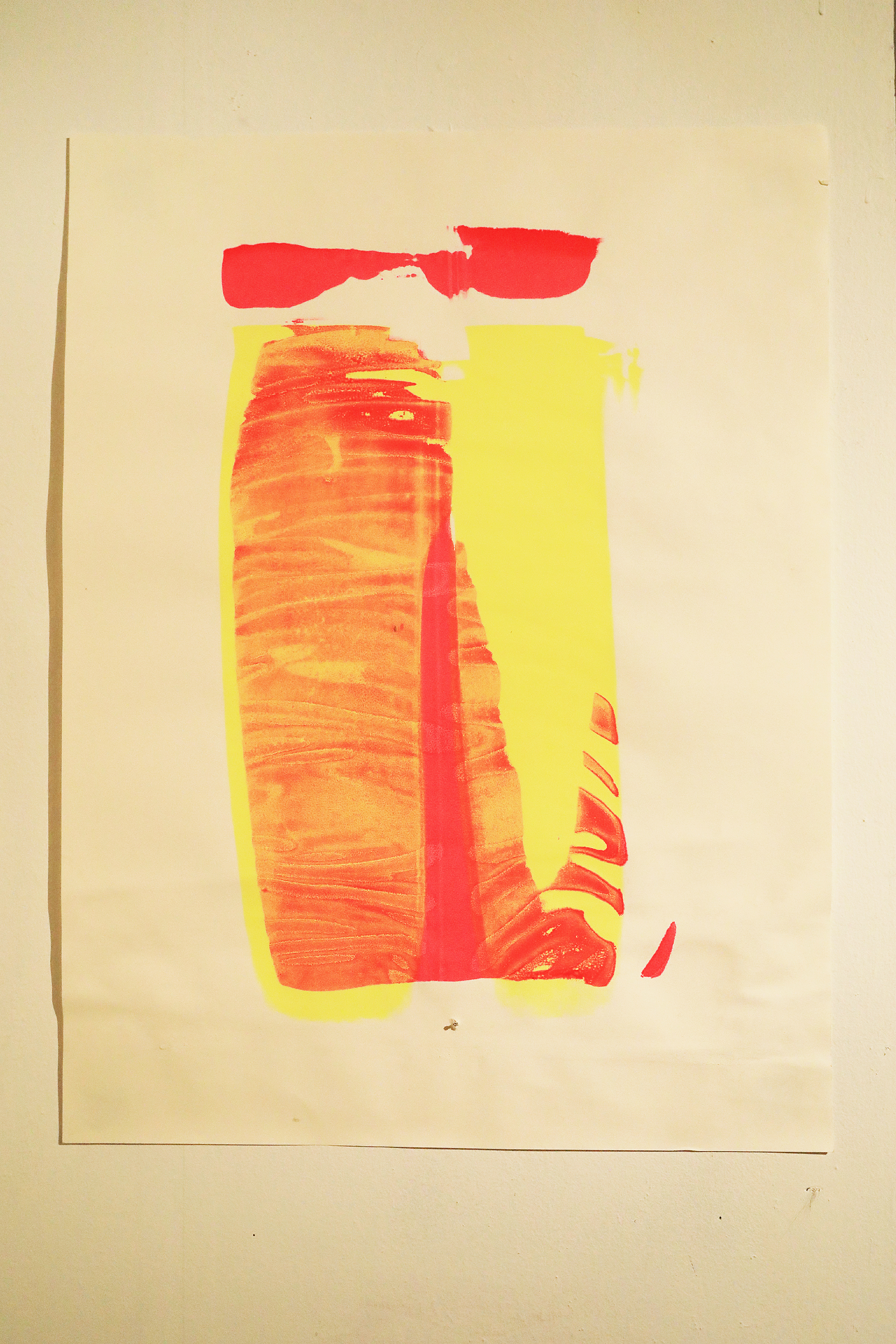
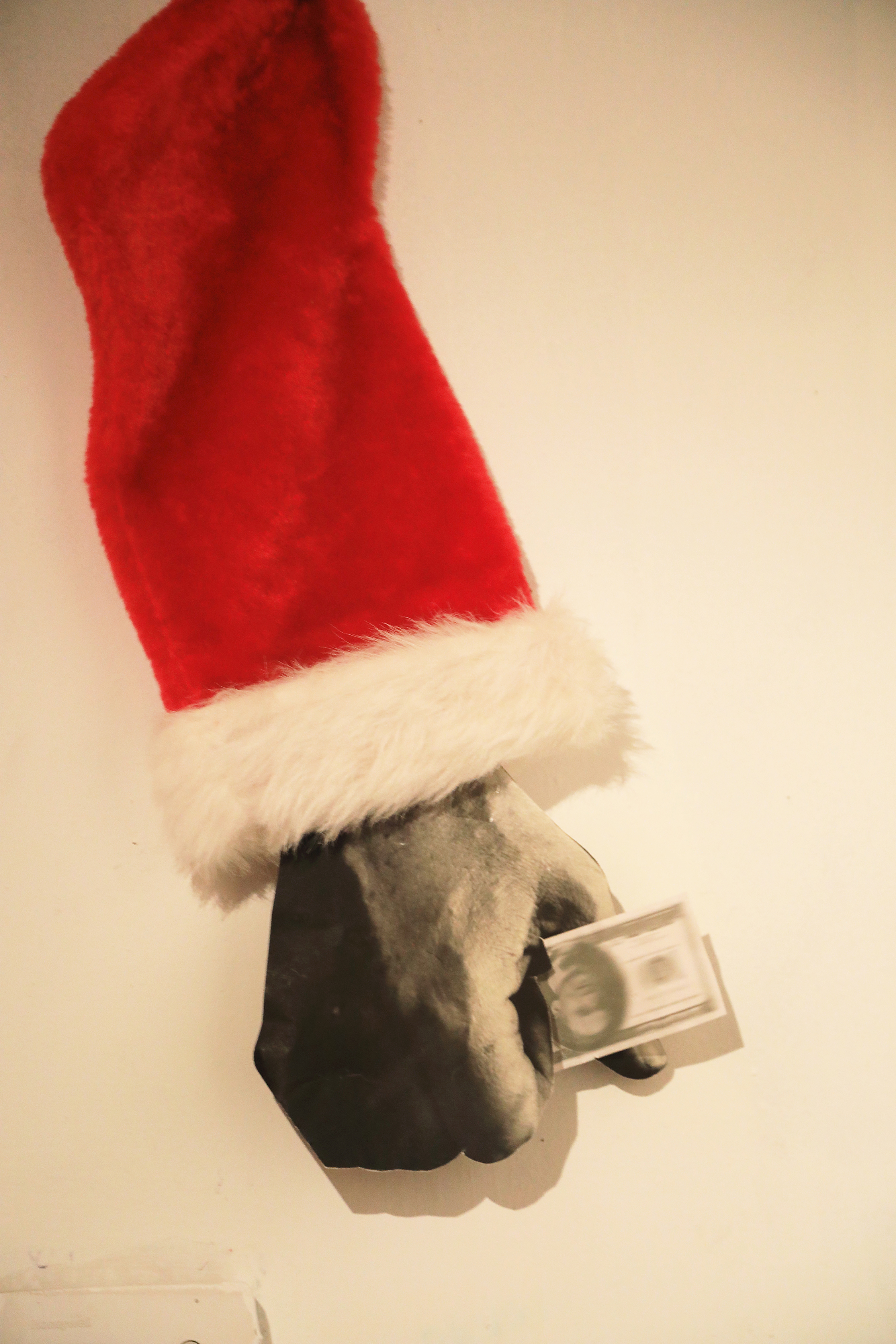
Blind Love: Interview with Aaron Cowan
MHM: How do you describe your current work?
AC: The work at Frequency Arts is an interactive installation comprised of made and found sculptural elements, along with some painting and drawing studies. There was a performative element during the opening reception where I became part of the work.
MHM: What brought you to this point? How do your prior bodies of work inform where you are today?
AC: I tend to work within a handful of themes or ideas, including desire, struggle, violence & play, aging vs. maturing. Much of my previous work has begged for its own environment or context, and this is one of the first explorations of bringing an idea to its fullest potential. I don’t view my work as teleological or building upon previous ideas as a starting point; the ideas demand their own manifestation, and that dictates the medium. Working within those themes, however, encourages cross-talk within the spectrum of my work and there is an undeniable thread of motifs as I develop a personal lexicon.
“I view my work less as a continuum and more a collection of ideas that are related but not necessarily similar; less stair step progression and more like an explosion or cracks from a bullet hole.”
MHM: What major steps forward have you taken in creating work for this show? What are you most excited about discovering in your work lately?
AC: The hunting blind has really gotten me thinking about structure, space, and the overlapping areas of my practice; how to incorporate sculpture, printmaking, and performance. Some really spectacular photos came out of this show as well, so I’m planning a photo series from this point. The performative aspect of me being present in the camouflage has also sparked some new ideas for performances.
I view my work less as a continuum and more a collection of ideas that are related but not necessarily similar; less stair step progression and more like an explosion or cracks from a bullet hole. This relieves some of the stress of making work that’s ‘on brand’ and frees me to explore ideas old and new.
Worrying about the worth of an idea, grappling prematurely with it’s formal, conceptual, and academic attributes, can really be paralyzing. It’s exciting to just think about stuff, make things, play in the studio and see what happens before wrestling with ‘what it is.’ I recently had a friend tell me all my work ‘feels’ like it’s from the same vein, the same hand, even over the last 5+ years, so that is an unconscious victory. I’m so excited to be rediscovering the studio! I’ve been on an unofficial hiatus for a while doing arts
admin, running a gallery, and directing a residency program, so getting back in there with fresh eyes and spirits is invigorating. I just got a small etching press and am also doing some experimental screen printing, looking at photography as a medium for the first time, creating zines and other publications, really just stretching out and diving in.
“ Ideas can strike powerfully at once, while mowing the lawn or falling asleep, making itself known as though it were a prophetic vision. Other times they seep out over a period of gestation, curiously mulling thoughts or questions over the course of months. ”
MHM: What is your process like? Do you sketch, collect other images? What is your state of mind when making work?
AC: As a trained artist I am consuming visual information non-stop, whether that’s going to museums and galleries, looking at art and artists online, or just noticing mundane, quotidian moments while driving, wandering, or thrifting. I collect images related to ideas or feelings I’m trying to capture or relate to, things I wish I had made, gifs, memes, animations, anything I pause on I’ll like’ for later or save to my folder of photos. Sketches are helpful to flesh out initial plans once I’m committed to an idea, but they act more as a guide or a reference than strict blueprints. The process of going from idea, to sketch, to reality can really be alchemical; I’m open to chance and change, which keeps some of the magic of creating and prevents me from the boredom of ‘I know exactly what I’m making.’ Ideas can strike powerfully at once, while mowing the lawn or falling asleep, making itself known as though it were a prophetic vision. Other times they seep out over a period of gestation, curiously mulling thoughts or questions over the course of months. When I’m actually in the studio, working, the hope is to get in the zone, to hyperfocus, which is almost to enter a trance, to channel some ‘Other’ as it were, and let the muse guide your choices by instinct. This is my favorite part of making art, where time disappears, the studio comes alive, and every decision feels like a winner; nothing but homers and slam dunks. I get bored easily by doing one thing, so I usually incorporate a lot of different processes. Sometimes the studio makes art by itself with its happenstance juxtapositions from manic work practices, and these have inspired new directions for thought and work
as well. The studio really is a microcosm and I love being there, observing and taking part in its milieu.
“I’ve been reading Foucault and some contemporary papers on the discourse of white male violence, masculinity, hunting, love, power...”
MHM: What research are you doing to learn more about your work right now?
AC: I thoroughly enjoy Haruki Murakami and am maybe a third of the way through his IQ84. I’ve been reading it for 2 or 3 years. I love it, I just don’t put a lot of energy towards leisurely reading. Most of my reading comes from research; in order to prepare for this body of work and some side projects I still have in development, I joined several alt-right, conservative, Trump-supporting Facebook groups for a handful of months. I’ve also been reading Foucault and some contemporary papers on the discourse of white male violence, masculinity, hunting, love, power, and picking these apart to gain a more complete understanding of these ideas. One of the best so far has been The Hunt As Love and Kill: Hunter-Prey Relations in the Discourse of Contemporary Hunting Magazines by Jennifer Rebecca Kelly and Stacy
Rule. Whitechapel’s Documents of Contemporary Art series is a great intro to some vast concepts in art, I think I own about a quarter of them and am constantly referencing them. I also keep up with the news, which is rife with toxic masculinity. I can only stomach so much of, but all of these social issues coming to light are definitely relevant with the concepts I’m working with. The reading informs myself as an artist but isn’t necessarily imbued in the work—I don’t want the viewer to need a priori knowledge in order to ‘get it,’ and with the current socio-political climate, a lot of people understand where I’m coming from. Much of it can get really nasty quickly, and while I don’t shy away from those issues, I would rather suggest them more subtly using tongue-in-cheek cleverness and ridiculous hyperbole, with maybe a
hard-hitting, heavy-handed accent of somber reality sprinkled here and there.
MHM: Do you have an idea of what you would make if time and money were limitless?
AC: I have a running list of ‘impossible’ ideas that I’d like to make, they’re usually installations or interactive sculptural rooms that combine art with the dynamics of American Gladiator, Nickelodeon Guts, or Ninja Warrior. Pulleys and breakaway walls, giant foam boulders, feats of physical prowess, action! I really want to make a video of me running up a boulder landslide that I’m still figuring out how to make. I think the ultimate installation would essentially be a real-life action-adventure puzzle videogame. Like you wake up and you’re in Zelda, or Myst or something. A free-roaming world you just have to figure out by exploring it.
“Is nostalgia a color? ”
MHM: What types of colors do you gravitate towards & why? (Specific to Frequency show?)
AC: Lately I’ve been especially attracted to this straight-out-of-the-can, industrial type of caution red. The color of stop signs, danger tape, fast cars. It’s gotta have a high gloss for that shiny, wet look. Bright, saturated, intense. I don’t normally care much for reds but I’ve been drinking it deeply with my eyes lately. It really lends itself well to the conceptual binary reconciliations present in Blind Love, the other colors accentuating the softness and warm fuzzy feelings that could get lost on guns and hunting blinds. It could be candy or it could be blood, guts. I love the natural color of materials, often using wood, concrete, or metal with little or no patina or surface work. There is also a magical sense of color from naturally aged objects, gun stocks and old plastic, that I can’t get enough of. Is nostalgia a color? Grandma’s tobacco-stained yellowish/off-white curtains is another color I’m drawn to.
MHM: What is your process / philosophy on materials?
AC: Nothing is off limits; the work needs to be what it needs to be. On that note, I will work with what I have, paying for expensive materials only when absolutely necessary. I often implement found objects, thrift store finds, scrap construction materials, or whatever I can get for free. I work for a grand-format printing company, so I have an cheap source of vinyl, paper, coroplast, stuff like that. The important thing is to experiment and find what works for you. Like anything, sometimes there is no substitute for a particular brand or product, and that comes from experience. But going into debt to be creative is no fun, and making art should be fun, at least sometimes.
“Art lives, dies, and is reborn.”
MHM: Where do you view your work on the spectrum of permanence and ephemerality?
AC: I used to struggle with the idea of ephemerality, especially as a sculptor creating videos and performances; I found myself wanting some thing, after everything was said and done, to present beyond just video or the performance. I believe the physical work I create is permanent in its materiality, but I don’t feel as attached to the idea of the ‘precious object.’ Art lives, dies, and is reborn. I am thinking more of how I can make use of previous work, whether to expand, react to, or reuse in some way, which is what usually happens if something isn’t sold or displayed. Video and performance are also more experiential and anti-capitalist, which makes it more visceral, confrontational, and gives me a good chuckle.
Aaron Cowan: Contact & Bio
Aaron is a multidisciplinary artist living and working in Chattanooga, TN. He received his BFA in 3D Sculpture from the University of Tennessee at Chattanooga and works primarily in the expanded field of sculpture, including video, installation, and performance. He was a founding member of the Apothecary project space in 2010; founding member and Curator of the Swine gallery; and Co-Founder and Director of ARC: Artist Residency Chattanooga, established in 2016. (Bio Taken From Aaroncowan.Net)
